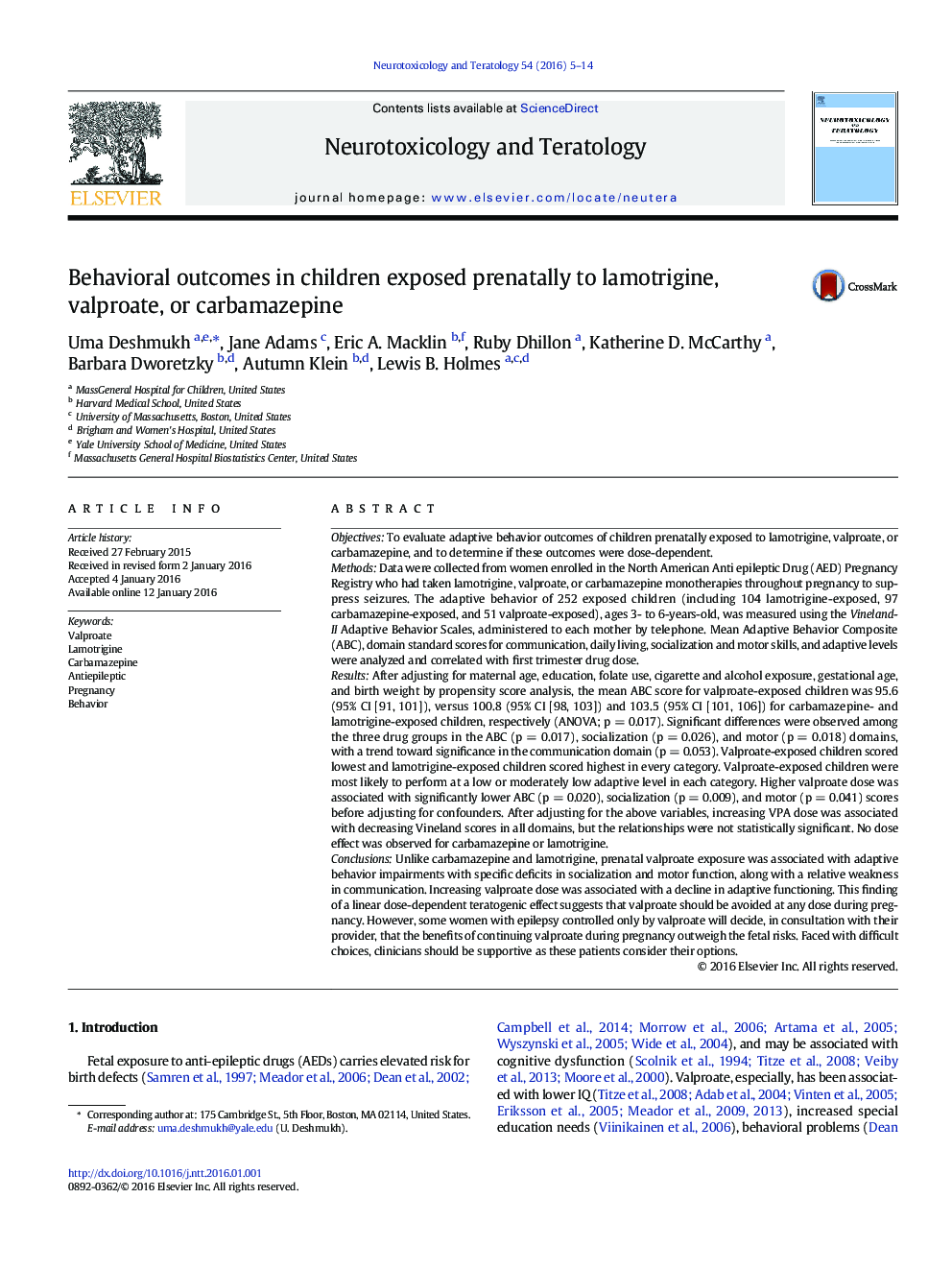| کد مقاله | کد نشریه | سال انتشار | مقاله انگلیسی | نسخه تمام متن |
|---|---|---|---|---|
| 2590830 | 1562082 | 2016 | 10 صفحه PDF | دانلود رایگان |
• Adaptive functioning is worse in children when exposed prenatally to VPA compared to LTG or CBZ.
• Compared to LTG or CBZ, VPA-exposed children have worse socialization, communication, and motor skills.
• Higher prenatal VPA doses are associated with worse adaptive functioning, especially socialization and motor skills.
ObjectivesTo evaluate adaptive behavior outcomes of children prenatally exposed to lamotrigine, valproate, or carbamazepine, and to determine if these outcomes were dose-dependent.MethodsData were collected from women enrolled in the North American Anti epileptic Drug (AED) Pregnancy Registry who had taken lamotrigine, valproate, or carbamazepine monotherapies throughout pregnancy to suppress seizures. The adaptive behavior of 252 exposed children (including 104 lamotrigine-exposed, 97 carbamazepine-exposed, and 51 valproate-exposed), ages 3- to 6-years-old, was measured using the Vineland-II Adaptive Behavior Scales, administered to each mother by telephone. Mean Adaptive Behavior Composite (ABC), domain standard scores for communication, daily living, socialization and motor skills, and adaptive levels were analyzed and correlated with first trimester drug dose.ResultsAfter adjusting for maternal age, education, folate use, cigarette and alcohol exposure, gestational age, and birth weight by propensity score analysis, the mean ABC score for valproate-exposed children was 95.6 (95% CI [91, 101]), versus 100.8 (95% CI [98, 103]) and 103.5 (95% CI [101, 106]) for carbamazepine- and lamotrigine-exposed children, respectively (ANOVA; p = 0.017). Significant differences were observed among the three drug groups in the ABC (p = 0.017), socialization (p = 0.026), and motor (p = 0.018) domains, with a trend toward significance in the communication domain (p = 0.053). Valproate-exposed children scored lowest and lamotrigine-exposed children scored highest in every category. Valproate-exposed children were most likely to perform at a low or moderately low adaptive level in each category. Higher valproate dose was associated with significantly lower ABC (p = 0.020), socialization (p = 0.009), and motor (p = 0.041) scores before adjusting for confounders. After adjusting for the above variables, increasing VPA dose was associated with decreasing Vineland scores in all domains, but the relationships were not statistically significant. No dose effect was observed for carbamazepine or lamotrigine.ConclusionsUnlike carbamazepine and lamotrigine, prenatal valproate exposure was associated with adaptive behavior impairments with specific deficits in socialization and motor function, along with a relative weakness in communication. Increasing valproate dose was associated with a decline in adaptive functioning. This finding of a linear dose-dependent teratogenic effect suggests that valproate should be avoided at any dose during pregnancy. However, some women with epilepsy controlled only by valproate will decide, in consultation with their provider, that the benefits of continuing valproate during pregnancy outweigh the fetal risks. Faced with difficult choices, clinicians should be supportive as these patients consider their options.
Journal: Neurotoxicology and Teratology - Volume 54, March–April 2016, Pages 5–14
